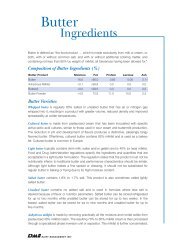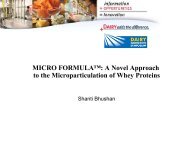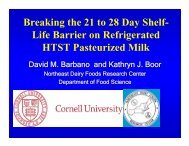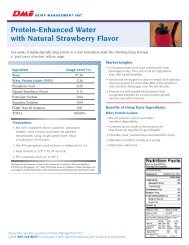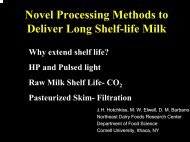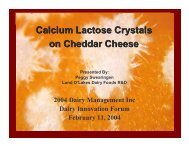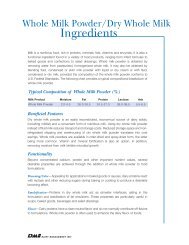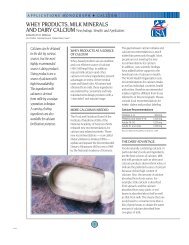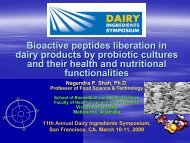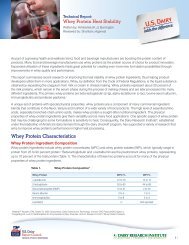Whey Demineralization: Various Process Options According to Plant
Whey Demineralization: Various Process Options According to Plant
Whey Demineralization: Various Process Options According to Plant
Create successful ePaper yourself
Turn your PDF publications into a flip-book with our unique Google optimized e-Paper software.
Typical Sweet <strong>Whey</strong> Mineral Composition<br />
Total Solids: 6.65%<br />
Lac<strong>to</strong>se: 4.95% w/w<br />
Proteins: 0.8% w/w<br />
NPN: 0.2% w/w<br />
Fat: 0.02% w/w<br />
Ash: 0.59% w/w<br />
Lactate: 0.01% w/w<br />
Phosphate<br />
Sulfate<br />
Sodium<br />
Potassium<br />
Mineral Composition<br />
Na: 410 mg/l Cl: 2102 mg/l<br />
K: 1784 mg/l HPO 4 : 1056 mg/l<br />
Mg: 108 mg/l SO 4 : 103 mg/l<br />
Ca: 415 mg/l<br />
* HPO4 is expressed as divalent ion<br />
Chloride<br />
Monovalent<br />
Divalent<br />
≈ 2<br />
Magnesium<br />
Calcium<br />
Comments:<br />
<strong>Whey</strong> is a complex mixture of ionic and non ionic species. The mineral content is pretty high<br />
therefore several processes have <strong>to</strong> be used <strong>to</strong> decrease it cost effectively.<br />
4<br />
Industrial Biotech / APPLEXION



